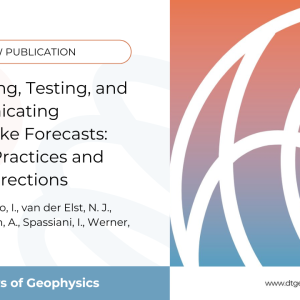This extensive review delves into the intricate world of Operational Earthquake Forecasting (OEF), offering a detailed exploration of current practices and future pathways in the field. The publication is the result of a large-scale collaborative effort among global earthquake forecasting experts, underscoring the importance of international cooperation in tackling complex scientific challenges.
Why This Review Matters
The ability to forecast earthquakes—assessing the probabilities of future seismic events—remains a crucial yet challenging task. While we cannot predict the exact location, time, or magnitude of future earthquakes, OEF systems are designed to provide near-real-time authoritative forecasts based on current earthquake activity. These systems play a vital role in aiding decision-making processes for a wide range of stakeholders.
The review covers several key areas:
- Expert opinions and future directions: the review analyzes the results of an expert elicitation, providing valuable insights into what leading experts believe to be critical when developing, testing, and communicating earthquake forecasts. Finally, Section 5 looks ahead to future research and the planned developments at various institutions.
- Theoretical foundations and model testing: the article lays out the theory behind various forecasting models, the methods used to test them, and essential insights into how earthquake forecasts are communicated to the public.
- Case studies from around the globe: the authors explore OEF systems in Italy, New Zealand, and the United States, examining the models these countries use, the testing procedures involved, and how they turn earthquake probabilities into actionable information, such as loss forecasts.
The review
The ability to forecast earthquakes, even at a probabilistic level, is a crucial scientific and societal goal. This comprehensive review captures the current state of OEF worldwide, providing valuable insights into its development, implementation, and communication. For those interested in the complexities and advancements in earthquake forecasting, this article is an essential read.
To access the full article, please visit:
Key information about the review
Link to publication: Developing, Testing, and Communicating Earthquake Forecasts.
Mizrahi, L., Dallo, I., van der Elst, N. J., Christophersen, A., Spassiani, I., Werner, M. J., et al. (2024). Developing, testing, and communicating earthquake forecasts: Current practices and future directions. Reviews of Geophysics, 62, e2023RG000823. https://doi.org/10.1029/2023RG000823




